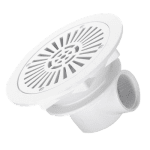Buoy
Ensure safety with our premium pool buoys! Ideal for lifeguards and swimmers, these durable, high-visibility buoys offer reliable flotation support, making them essential for swim training and poolside safety measures.
A swimming pool buoy is a vital piece of safety and recreational equipment used in both commercial and residential swimming pools. These buoy devices serve several essential purposes, such as marking swimming lanes, indicating safety zones, assisting with swim training, and providing flotation support in case of an emergency. Available in various shapes, sizes, and designs, swimming pool buoys are designed for both functionality and durability, contributing to an organized and safe swimming environment for all users.
Types and Uses of Swimming Pool Buoys
Swimming pool buoys come in several types, each tailored to meet specific needs within a pool setting. Below are some of the most common types and their uses:- Lane Line Buoys: These buoys are part of the lane dividers in competitive swimming pools. Typically attached to ropes, they float on the surface to delineate lanes, helping swimmers stay in their designated area. Lane line buoys are often color-coded to mark the beginning, middle, and end of the lane, and their design helps reduce wave resistance, allowing for a smoother swimming experience.
- Safety Marker Buoys: Used to mark boundaries within a pool, these buoys often float along the perimeter of deep ends, shallow areas, or specific zones like diving sections. Safety buoys are typically bright in color for high visibility and alert swimmers to changes in depth, ensuring they remain within safe areas according to their skill level.
- Training Buoys: Commonly used in swim training, these small, hand-held devices, often known as “pull buoys,” are designed to help swimmers improve specific techniques. By placing the buoy between the legs, swimmers can isolate their upper body, focusing on developing stroke power and arm technique without kicking.
- Lifeguard and Rescue Buoys: These buoys are an essential part of safety protocols in many pools. Lifeguards use them to provide flotation support to swimmers in distress, ensuring that they stay afloat while being brought to the pool's edge or shallow water. Rescue buoys are usually made from durable, buoyant materials and come in bright colors to be easily identifiable in emergencies.
- Recreational Pool Buoys: Some swimming pools also have recreational buoys, which are used in games or play activities, especially in family and resort-style pools. These buoys can be used in various water sports or just as floating devices for casual use, adding an element of fun and relaxation to the pool experience.
Materials and Durability
Swimming pool buoys are crafted from durable, water-resistant materials that can withstand prolonged exposure to chlorinated water, UV rays, and varying temperatures. Common materials include:- Polyethylene and PVC: These plastics are widely used in pool buoys for their resistance to chemicals and UV rays. They’re lightweight, buoyant, and come in bright colors, which makes them ideal for safety and lane marker buoys.
- Nylon and Foam: Some training and rescue buoys use foam interiors with a nylon coating for additional comfort and buoyancy. These materials are soft and flexible, making them suitable for close contact with swimmers.
- Rubberized Compounds: Used primarily in heavy-duty rescue buoys, rubberized materials offer excellent durability and resistance to wear, ensuring the buoy remains intact in harsh conditions.


















